Facilities Awards & Honors
Skip to Main Content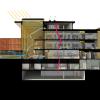
COTE Award 2019
Committee On The Environment
The Committee on the Environment, a branch of the AIA, is proud to present the COTE Award to the Amherst College Science Center, designed by Payette. Every year, ten firms are selected for projects that were recently completed and satisfy ten metrics, which serve as guidelines to evaluate and measure performance and environmental impact, constituting outstanding sustainable design. The ten metrics are integration, community, ecology, water, economy, energy, wellness, resources, change, and discovery.
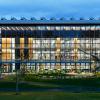
AIA Architecture Firm Award 2019
Payette is the 56th recipient of the AIA Architecture Firm Award. This award is the highest honor that the American Institute of Architects bestows on an architecture practice and recognizes a firm that has consistently produced distinguished architecture for at least ten years. Payette demonstrates particular success in the area of academic buildings, including Amherst College’s Science Center and Beneski Earth Science and Natural History Museum Building. Payette is dedicated to design, research and collaboration both in the United States and internationally.
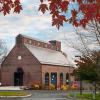
2016 Paul E. Tsongas Award for Stewardship, 2016 BSA Design Award and 2016 Association of College Unions International Award
Amherst College was presented with 3 awards upon completion of the Powerhouse for its excellence in preservation of the Commonwealth's past (Paul E. Tsongas Award), its distinction in design (BSA Design Award) and its endeavor to create a student centered facility that supports campus community and learning (Association of College Unions International Award).

2014 Preservation Award of Merit-Town of Amherst December
The Town of Amherst presented Amherst College with a Preservation Award of Merit for its recent renovation of the Inn on Boltwood. The award recognizes the College’s efforts to preserve the classic look and character of the Inn while simultaneously implementing a comprehensive modernization and expansion project. Special attention was paid to restoring historic exterior details such as true divided-lite windows, whitewashed brick, copper flashings, and gas lanterns. Similarly, original interior components such as hardwood floors, decorative mantels and six-panel doors were painstakingly restored and then enhanced with period-specific furnishings and finishes.
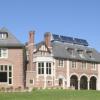
2011 Paul E. Tsongas Award for Stewardship
For demonstrating good stewardship in the renovations of many of its residential buildings, Amherst College was honored with a 2011 Paul E. Tsongas Award from Preservation Massachusetts (PM), a nonprofit organization “dedicated to preserving the Commonwealth’s historic and cultural heritage.” The award “recognizes those who have played an extraordinary role in promoting the preservation of our Commonwealth’s past for the benefit of the future.”
According to Tom Davies, the college’s assistant Director of Facilities and Director of Design and Construction, a board member of PM became aware of Amherst’s ongoing stewardship efforts when Davies gave a presentation on the topic of sustainable preservation at a Northeast Sustainable Energy Association conference in 2009. “Amherst’s commitment to maintaining their historic campus showcases incredible work and dedication and serves as a model for other colleges and universities to emulate.”
2011 Marvin Architect Challenge Award

The renovations of Mayo Smith, Seelye, and Hitchcock Houses, at Amherst College were selected as the recipients of the 2011 Architect Challenge Award. This award is given to solution-driven designs that exemplify innovation, classic beauty and sustainability. Amherst College was recognized for their historic preservation and forward thinking in the category of collegiate housing.

2010 AIANY Award of Merit
Amherst College’s Mayo Smith, Seelye and Hitchcock Houses overlook the Amherst Town Common and are local historic landmarks. This project assures their preservation, and also looks to the challenges of the future with ultra-high performance building envelopes, the use of solar energy to provide domestic hot water and high efficiency mechanical and electrical systems. The off-campus buildings were part of the 2010 “Greening of the Valley” exhibition at the University of Massachusetts highlighting environmental responsive building initiatives occurring in the Pioneer Valley. The buildings provide a living environment that’s attractive to students with amenities comparable to the new dorms on campus. Plans include a mix of room types preferred by upper class students, including singles, two-room doubles and suites. Added program includes common social and study space, music practice rooms, laundries and bathrooms. Existing floor plans were revised to improve space utilization, reclaim under-utilized space and accommodate new egress stairs. At Hitchcock House, an addition provides additional bed space.

2007 Honor Award of the Boston Society of Architects
The Beneski Earth Sciences Building and Natural History Museum is sited at a prominent location at the head of the East Campus. The museum allows for the dramatic display of the college's natural history collections. The facility enhances the identity and visibility of both the geology department and museum. The museum takes the form of a large glass display case sliding proud of the more traditional form of the building, recalling the many drawers in the museum available for patrons to study the collection.
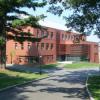
2008 Best in Class Brick in Architecture Award
Beneski Earth Sciences and Natural History Museum at Amherst College won the 2008 Best in Class Brick in Architecture Award in the Educational Building category, the most competitive class for this prestigious award.
Exterior brick and terra cotta elements combine to create a balanced composition of positive and negative space, varying subtle textures between. Terra cotta “baguettes” extend from solid masonry out across expanses of glass visually uniting the façade while providing sun screening that both reduces energy usage and protects the specimens inside. The form, color, shape and detailing of masonry elements are sensitive to neighboring McKim Mead & White’s Fayerweather Hall while remaining distinctly of the 21st century. Aesthetic as well as technical design elegance contributed to this award.

2005 Award for Design Excellence, AIA New England
Sited along a gently sloping lawn, the buildings frame the view towards the Holyoke Range beyond, acting as a transition between the more formal areas of campus and the athletic fields below.
These 4 and 5 story buildings are reminiscent of the simple Puritan buildings of historic College Row. The buildings have relatively small floor plans with a maximum of 15 single occupant rooms on a floor to encourage a strong sense of community. Their simple yet elegant forms provide a place for students to call home.